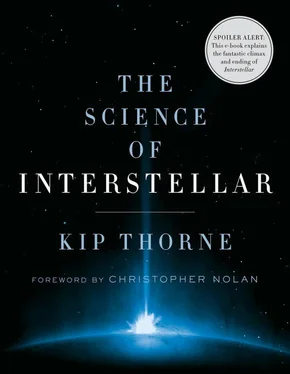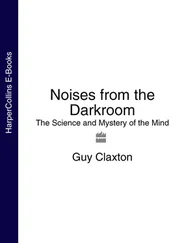Astronomers searched in vain for Vulcan. They could not find it, nor could they find any other explanation for the anomaly. By 1890 the conclusion seemed clear: Newton’s inverse square law must be very slightly wrong.
Wrong in what way? A revolutionary way, it turned out. The way discovered by Einstein twenty-five years later. The warping of time and space endow the Sun with a gravitational force that obeys Newton’s inverse square law, but only nearly. Not precisely.
Upon realizing that his new relativistic laws explain the observed anomaly, Einstein was so excited that he suffered heart palpitations and felt like something snapped inside himself. “For a few days I was beside myself with joyous excitement.”
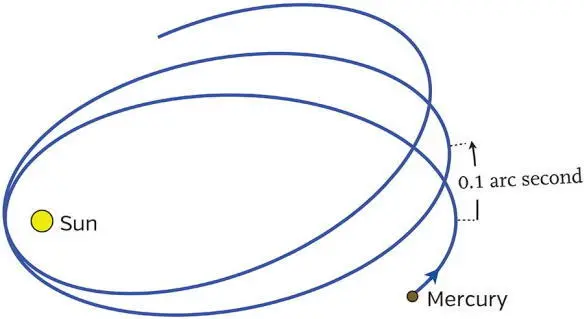
Fig. 24.1. The anomalous precession of Mercury’s orbit. In this picture, I exaggerate the orbit’s ellipticity (its elongated shape) and the magnitude of its precession.
Today the measured anomalous precession and the predictions by Einstein’s laws agree to within one part in a thousand (one-thousandth of the anomalous precession), which is the accuracy of the observations—a great triumph for Einstein!
The Anomalous Orbits of Galaxies Around Each Other

In 1933 the Caltech astrophysicist Fritz Zwicky announced he had discovered a huge anomaly in the orbits of galaxies around each other. The galaxies were in the Coma cluster (Figure 24.2), a collection of about a thousand galaxies, 300 million light-years from Earth, in the constellation Coma Berenices.
From the Doppler shifts of the galaxies’ spectral lines, Zwicky could estimate how fast they were moving relative to each other. And from the brightness of each galaxy, he could estimate its mass and thence its gravitational pull on the other galaxies. The galaxies’ motions were so fast that there was no way their gravitational pulls could hold the cluster together. Our best understanding of the universe and of gravity insisted that the cluster must be flying apart, and would soon be completely destroyed. If so, then the cluster must have formed by random motions of all those galaxies and would disrupt in a veritable blink of an eye compared to other astronomical phenomena.

Fig. 24.2. The Coma cluster of galaxies as seen through a large telescope.
This conclusion was totally implausible to Zwicky. Something was wrong with our conventional wisdom. Zwicky made an educated guess: The Coma cluster must be filled with some sort of “dark matter” whose gravity is strong enough to hold the cluster together.
Now, many anomalies that astronomers and physicists think they have discovered go away when observations improve. This one did not. Instead, it spread. By the 1970s it was clear that so-called dark matter permeates most all clusters of galaxies and even individual galaxies. By the 2000s, it was clear that the dark matter gravitationally lenses light from more distant galaxies (Figure 24.3), just as Gargantua gravitationally lenses light from stars (Chapter 8). Today that lensing is being used to map the dark matter in our universe.
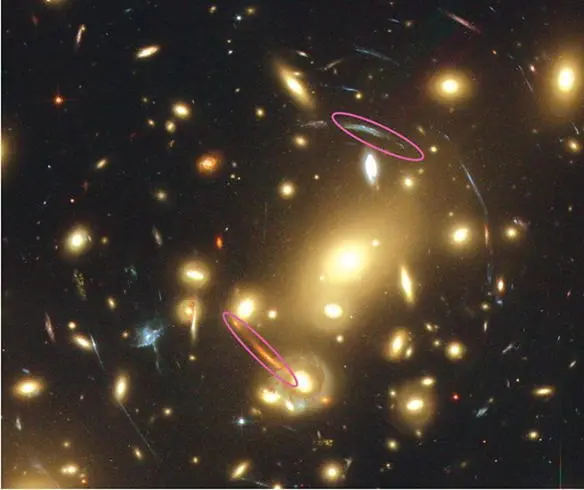
Fig. 24.3. Dark matter in the galaxy cluster Abell 2218 gravitationally lenses more distant galaxies. The images of the lensed galaxies are arc-shaped (e.g., those I circled in purple), analogous to arc structures seen in Gargantua’s gravitational lensing, Chapter 8.
And today physicists are fairly sure that the dark matter is truly revolutionary, that it consists of fundamental particles of a type never before seen, but a type predicted by our best current understanding of the quantum laws of physics. Physicists have embarked on a holy-grail mission: a quest to detect these particles of dark matter, shooting through the Earth with near impunity, and measure their properties.
The Anomalous Acceleration of the Universe’s Expansion

In 1998 two research groups independently discovered an astounding anomaly in the expansion of our universe. For this discovery, the groups’ leaders (Saul Perlmutter and Adam Reiss at the University of California, Berkeley, and Brian Schmidt at the Australian National University) won the 2011 Nobel Prize in Physics.
Both groups were observing supernova explosions: explosions triggered when a massive star exhausts its nuclear fuel and implodes to form a neutron star, and the implosion energy blows off the star’s outer layers. They discovered that distant supernovae are dimmer than expected, and therefore farther away than expected. Farther enough away that the universe’s expansion must have been slower in the past than today. The expansion is accelerating. See Figure 24.4.
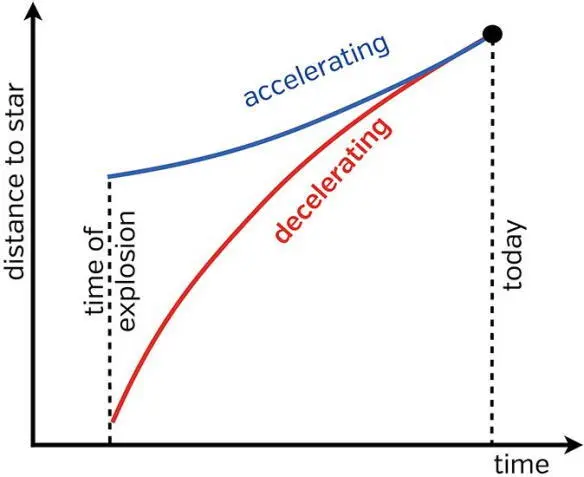
Fig. 24.4. The distance to the star at the time of explosion (the time that the light we see was emitted), under two assumptions: that the universe’s expansion is decelerating ( red ) or accelerating ( blue ). The explosion was dimmer than expected, so farther away. The universe must be accelerating.
Now, our best understanding of gravity and the universe required, unequivocally, that all things in the universe (stars, galaxies, galaxy clusters, dark matter, etc.) must pull on each other gravitationally. And by that pull they must slow the universe’s expansion. The universe’s expansion must slow down over time, not speed up.
For this reason, I, personally, didn’t believe the claimed acceleration, nor did many of my astronomer and physicist colleagues. We didn’t believe until other observations, by completely different methods, confirmed it. Then we caved.
So what’s going on? There are two possibilities: Something is wrong with Einstein’s relativistic laws of gravity. Or something else is filling the universe, in addition to ordinary matter and dark matter. Something that repels gravitationally.
Most physicists love Einstein’s relativistic laws and are loathe to give them up, and so lean toward repulsion. The hypothetical material that repels has been given the name “dark energy.”
The final verdict is not in. But if the cause of the anomaly is, indeed, dark energy (whatever that may be), then gravitational observations now tell us that 68 percent of the universe’s mass is in dark energy, 27 percent is in dark matter, and only 5 percent is in the kind of ordinary matter of which you, I, planets, stars, and galaxies are made.
So physicists today have another holy grail: to understand whether the universe’s accelerated expansion is caused by a breakdown of Einstein’s relativistic laws (and if so, what is the nature of the correct laws?), or is caused by repulsive dark energy (and if so, what is the nature of the dark energy?).
Gravitational Anomalies in Interstellar

The gravitational anomalies in Interstellar are seen on Earth, by contrast with the three anomalies that I described.
Читать дальше
